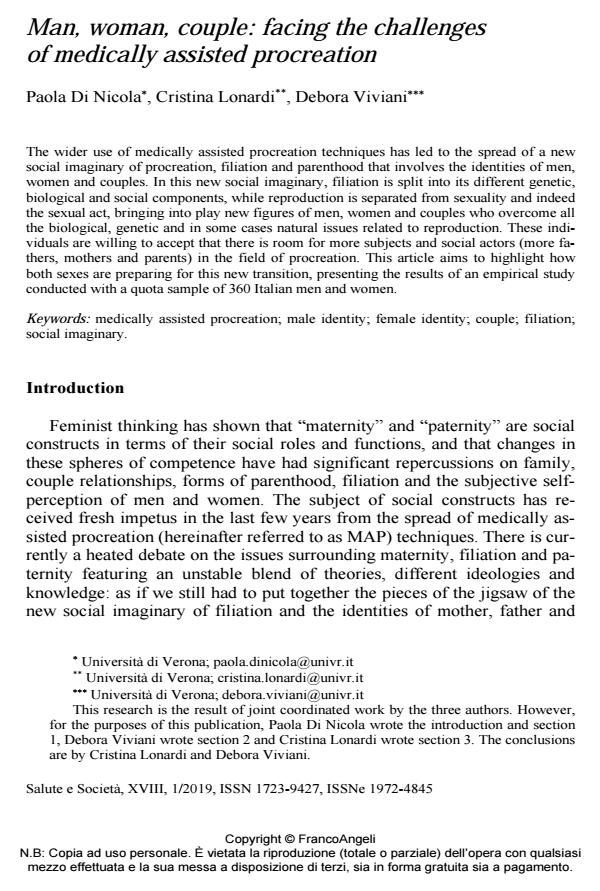Man, woman, couple: facing the challenges of medically assisted procreation
Journal title SALUTE E SOCIETÀ
Author/s Paola Di Nicola, Cristina Lonardi, Debora Viviani
Publishing Year 2019 Issue 2019/1
Language English Pages 18 P. 82-99 File size 249 KB
DOI 10.3280/SES2019-001006
DOI is like a bar code for intellectual property: to have more infomation
click here
Below, you can see the article first page
If you want to buy this article in PDF format, you can do it, following the instructions to buy download credits

FrancoAngeli is member of Publishers International Linking Association, Inc (PILA), a not-for-profit association which run the CrossRef service enabling links to and from online scholarly content.
The wider use of medically assisted procreation techniques has led to the spread of a new social imaginary of procreation, filiation and parenthood that involves the identities of men, women and couples. In this new social imaginary, filiation is split into its different genetic, biological and social components, while reproduction is separated from sexuality and indeed the sexual act, bringing into play new figures of men, women and couples who overcome all the biological, genetic and in some cases natural issues related to reproduction. These individuals are willing to accept that there is room for more subjects and social actors (more fathers, mothers and parents) in the field of procreation. This article aims to highlight how both sexes are preparing for this new transition, presenting the results of an empirical study conducted with a quota sample of 360 Italian men and women.
Keywords: Medically assisted procreation; male identity; female identity; couple; filiation; social imaginary.
Paola Di Nicola, Cristina Lonardi, Debora Viviani, Man, woman, couple: facing the challenges of medically assisted procreation in "SALUTE E SOCIETÀ" 1/2019, pp 82-99, DOI: 10.3280/SES2019-001006